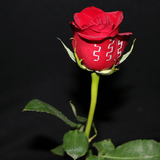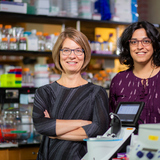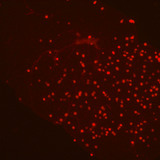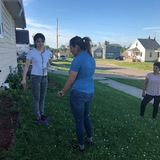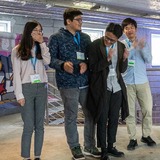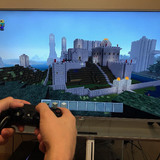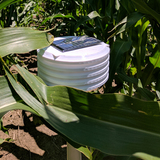News Archive
Friday, July 26 2019
-
Engineers use heat-free tech for flexible electronics; print metal traces on flowers, gelatin
Researchers led by Iowa State's Martin Thuo are using liquid-metal particles to print electronic lines and traces on rose petals, leaves, paper, gelatin -- on all kinds of materials. The technology creates flexible electronics that could have many applications such as monitoring crops, tracking a building's structural integrity or collecting biological data.
-
Family experience influences diabetes risk, management for African Americans
African American families not only share a higher risk for Type 2 diabetes, but many myths and misconceptions about the disease are often passed on from one generation to the next. To understand how family experiences influence risk and management of the disease, a team of Iowa State University researchers interviewed parents and adult children of 20 African American families with strong histories of Type 2 diabetes.
-
Connecting silos: Iowa State University scientists call for unconventional collaboration in agriculture
Iowa State University researchers hope to connect the "silos" of various disciplines by encouraging wide collaboration to address agricultural challenges. The effort is part of the Genomes to Fields Initiative, which began in 2014 to make genomic data related to corn as widely available as possible.
-
Iowa State attracts $469 million in external funds, sets record of $260.9 million for research
Iowa State University attracted $469 million of total external funding for the fiscal year that ended June 30. That's the third highest total for external funding and follows two record years of support. The latest total includes a record $260.9 million of external support for Iowa State research.
-
ISU study describes how mosquito immune system fights off malaria parasite
A new study describes the way mosquito immune systems fight malaria parasites using various waves of resistance. The study could lay the groundwork for future research to combat the transmission of malaria, which sickens millions of people across the globe every year.
-
Helping Marshalltown recover from tornado through research, outreach
One year after an EF-3 tornado struck Marshalltown, Iowa State students and faculty are conducting research and outreach to help a community still in recovery. They’re using what they’ve learned to create a toolkit that communities can use to examine challenges that exacerbate a disaster’s damage and slow recovery efforts.
-
Iowa State students develop self-checkout fraud detection model to win international data mining competition
A team of Iowa State University graduate students brought home the top prize from the 20th annual Data Mining Cup, beating nearly 150 teams from 114 universities in 28 countries. The winners were announced July 3 in Berlin. The students developed a mathematical model to detect cases of fraud at self-checkouts in grocery stores.
-
Want to boost creativity? Try playing Minecraft
Video games that foster creative freedom can increase creativity under certain conditions, according to new research from Iowa State University. The experimental study compared the effect of playing Minecraft, with or without instruction, to watching a TV show or playing a race car video game. Those given the freedom to play Minecraft without instruction were most creative.
-
Iowa State-Iowa researchers team up to advance state’s bioscience priorities
A second year of seed grants will support development of three Iowa State-Iowa research teams working on projects in the biosciences. The idea is to help the researchers build joint teams, collect data, grow projects, compete for bigger grants and help grow Iowa's bioscience economy.
-
Physicists use light waves to accelerate supercurrents, enable ultrafast quantum computing
Iowa State's Jigang Wang and a team of collaborators have discovered that terahertz light --light at trillions of cycles per second -- can act as a control knob to accelerate supercurrents. That can help open up the quantum world of matter and energy at atomic and subatomic scales to practical applications such as ultrafast computing.
